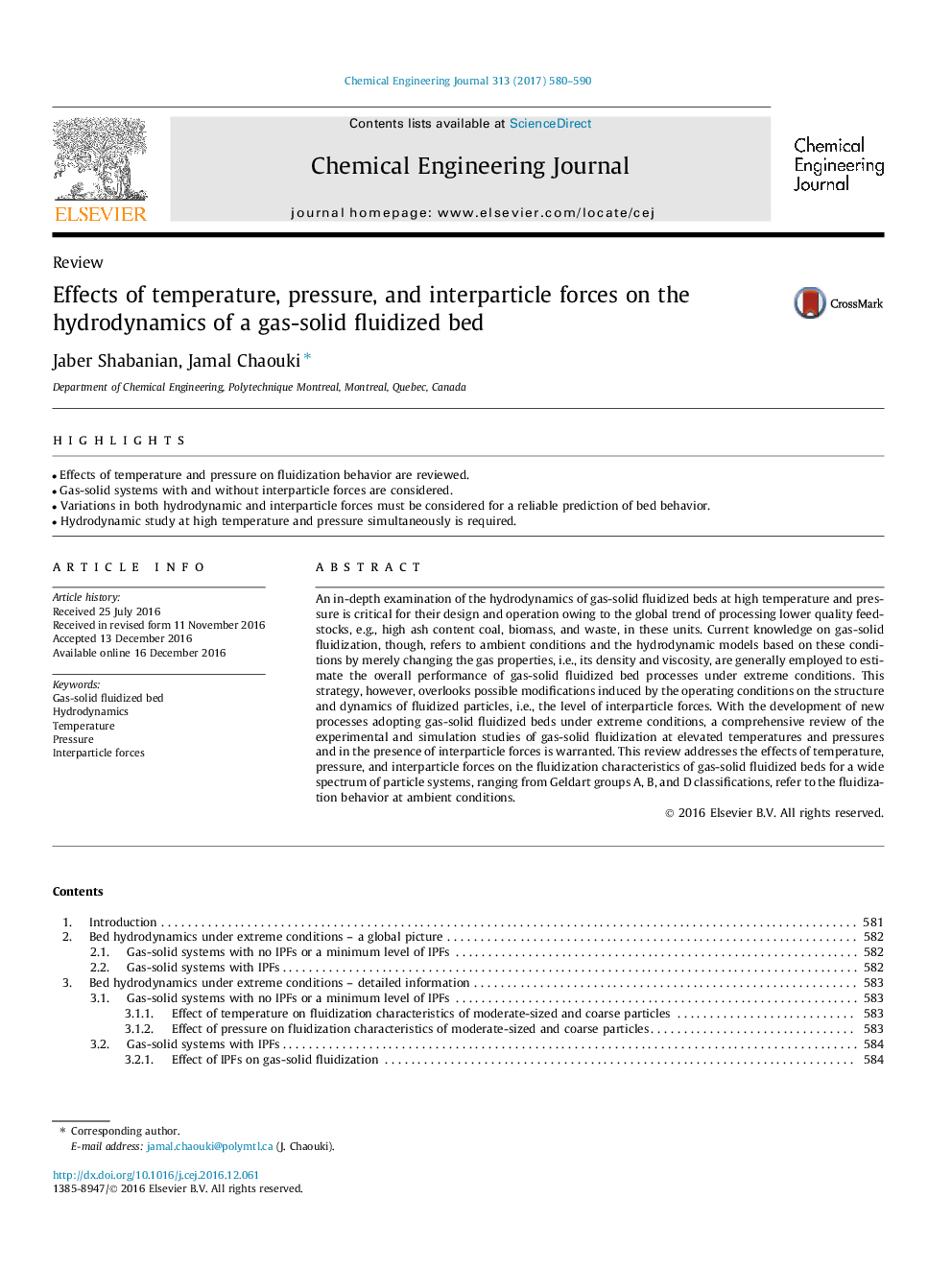| Article ID | Journal | Published Year | Pages | File Type |
|---|---|---|---|---|
| 6466523 | Chemical Engineering Journal | 2017 | 11 Pages |
â¢Effects of temperature and pressure on fluidization behavior are reviewed.â¢Gas-solid systems with and without interparticle forces are considered.â¢Variations in both hydrodynamic and interparticle forces must be considered for a reliable prediction of bed behavior.â¢Hydrodynamic study at high temperature and pressure simultaneously is required.
An in-depth examination of the hydrodynamics of gas-solid fluidized beds at high temperature and pressure is critical for their design and operation owing to the global trend of processing lower quality feedstocks, e.g., high ash content coal, biomass, and waste, in these units. Current knowledge on gas-solid fluidization, though, refers to ambient conditions and the hydrodynamic models based on these conditions by merely changing the gas properties, i.e., its density and viscosity, are generally employed to estimate the overall performance of gas-solid fluidized bed processes under extreme conditions. This strategy, however, overlooks possible modifications induced by the operating conditions on the structure and dynamics of fluidized particles, i.e., the level of interparticle forces. With the development of new processes adopting gas-solid fluidized beds under extreme conditions, a comprehensive review of the experimental and simulation studies of gas-solid fluidization at elevated temperatures and pressures and in the presence of interparticle forces is warranted. This review addresses the effects of temperature, pressure, and interparticle forces on the fluidization characteristics of gas-solid fluidized beds for a wide spectrum of particle systems, ranging from Geldart groups A, B, and D classifications, refer to the fluidization behavior at ambient conditions.
